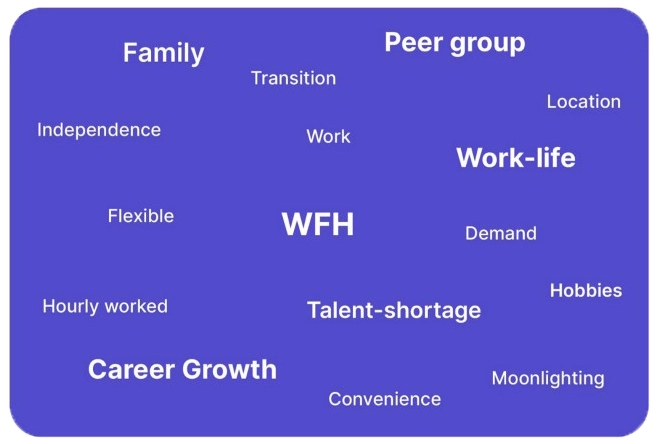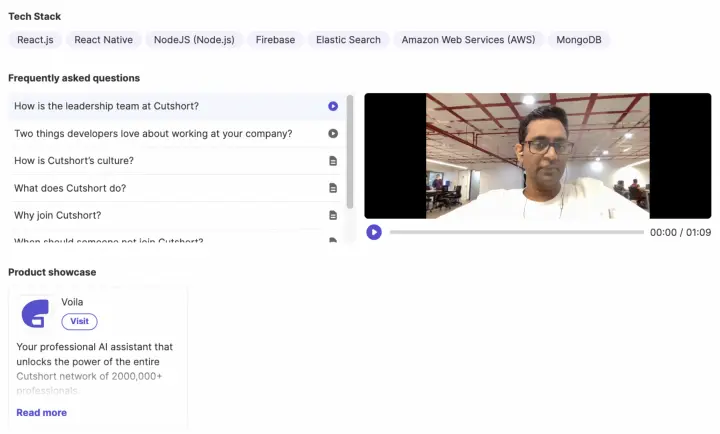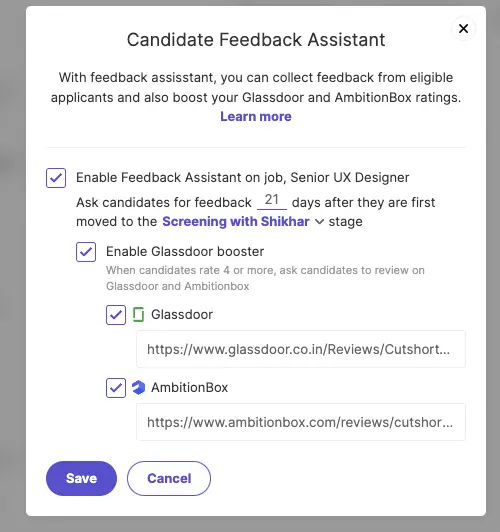As we all know, the tech talent market has undergone deep changes in the last few years.

If you have been hiring, you would have experienced that:
- Skilled talent has become even more scarce.
- Salaries have become 2x to 3x.
- Tactics like offering BMW bikes or fat joining bonuses failed.
- Even after all the efforts, top talent didn’t join.
What led to these changes?
In one line – The market has changed and so have candidate preferences. Just like you don’t want to cut checks to pay your staff today, candidates no longer want just a ‘naukri’ – they want ‘careers’ that fit well in their lives.

Old hiring processes were employer centric and don’t work anymore

Many companies now are seeing a big drop in their hiring funnels. And it’s now hitting where it hurts the most:
Candidates are not joining even if they have accepted their offers.

So, what is the secret to hiring top talent now?
There is no secret ingredient. But if there is one thing, it would be:
We need to think from the candidate’s perspective.
Step 1: Source the right way
Let’s say you are selling coffee machines.
- Where will you go to find customers? Airports or train stations?
- Will you use emails/LinkedIn messages or will you cold call them?
The context of your conversation matters. The same person will respond differently depending on where and how you approach them.
Applied to recruiting, the trust level is quite different between a candidate you cold-called via a traditional job portal versus someone who was impressed with your company on Cutshort:

Why care for this?
This difference in the quality of candidate and trust level might not look like much in the start, but by the time you reach the offer-to-acceptance stage, it becomes amplified, thus making or breaking your hiring funnel.
Step 2: Invest in technology
Let’s see the numbers
- Applications have increased 2x in the last 2 years.
- Many of them are irrelevant or “less relevant”.
- Number of recruiters has not changed much.
And hey – let me remind you – ignoring the applications is not an option. Why? Well, Glassdoor ratings.

Using a smart AI recruiting tool is very important for this reason. For instance, with Cutshort, 2000+ companies are able to:
- Identify the non-obvious talent using algorithms and audio screening questions.
- Move forward the right ones easily without the manual effort.
- Handle the non-fitting candidates nicely.
- Collect feedback and even boost Glassdoor ratings automatically.
Step 3: Give the fitting candidates a great experience and validation
Okay, so you have got good candidates who have resonated with your opportunity and your company. Now, you can just interview them, negotiate and close, right?
It isn’t that easy. Not in the new talent market.
Since now each candidate is unique and has many options, you really need to understand each one deeply. I call this process “discovery” of what they are looking for:
- Where are they in their career? Where do they want to go?
- What are their top #3 criteria while choosing their next opportunity?
- Did they like something specific about your opportunity or company?
- etc. etc.
Once you understand all this, you need to use this information at every step of the hiring process.

In fact, based on your understanding, you should be able to tweak the hiring process a bit for every candidate:

Contrast this with what it should look like:

(Bonus) Step 4: Make your Employer Branding essential kit
I know you’re bored with this advice. But think about it – while everyone understands the value of Employer Branding, most companies fail to do it well. Why?
Employer Branding is not about
- Fancy career pages (with pics of fun activities/dogs/coffee machines)
- Writing sentences like “we are an equal opportunity company…”
- LinkedIn posts about work anniversaries, awards, etc.
Let’s also debunk two more myths:

The essential kit to Employer Branding
You don’t need a lot of marketing or recruiting effort. I have found that most companies can get an 80% lift by just doing these basic things:
- Unearth your 3-4 key attributes: These are not perks or benefits but things about how you work. Things you are really big on – ‘hard work’, ‘mission’ etc. Don’t try to copy others and don’t try to please everyone.
- Build your core asset kit: No need to have fancy pages – just one blog post on those 3-4 differentiators is enough. Try to include 2-3 real examples of those differentiators at work.
- Make Employer Branding a process and automate it as much as possible: Asking for feedback, Glassdoor reviews, making social media posts, etc. often becomes a lesser priority.
While the first two things above need to be done by you, #3 is where a platform such as Cutshort comes in by offering what we call ‘Zero Maintenance Employer Branding‘

Tech hiring has changed irreversibly. Companies will adapt or perish.
From steel to auto to finance, every company today is a tech company.
The demand for quality tech talent is going global and will increase exponentially. All this while, the candidate preferences are going to change at a fast clip.
Companies will need to adapt to their hiring and retention process or else they will continue to bleed talent and unfortunately, phase out.
If the ideas in this post resonated with you and you’d like to implement them, check out Cutshort. We are building it for the talent market of today and the future.





